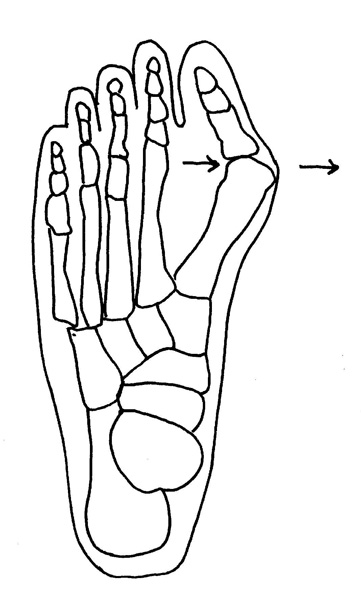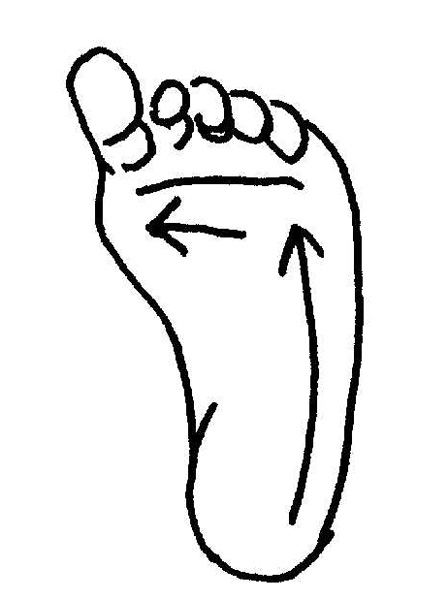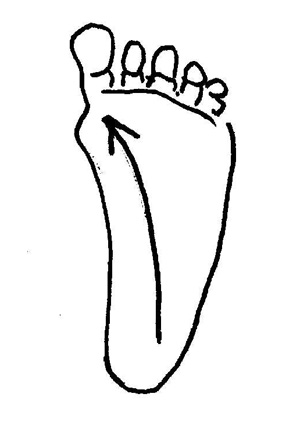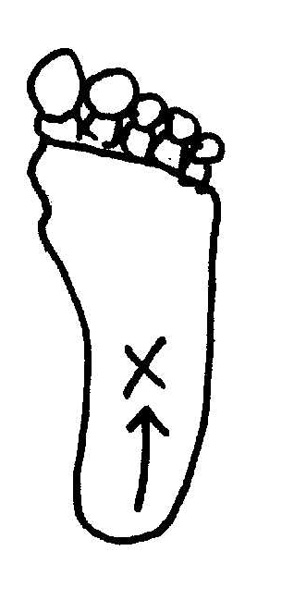Exercises for Flat Foot and Valgus Foot
- Exercises that allow you to gradually roll back the negative
consequences of a Flat Foot and Valgus Foot related problems.
- When done on the regular basis, reduce pain and restore foot
functions to full extent.
An Introduction

Fair warning.
Exercises in this tutorial are generally speaking, safe. But with due enthusiasm one can do a lot of damage, provided his/her medical condition requires softer approach. Please, consult your doctor before following the tutorial.
How can exercises help?
Our body is not static. For one thing, it is getting older, but this is just part of the picture. Our blood cells and cells at the surface of our intestines are being replaced daily. Our muscles have a 30 days "self-decay" period, it merans that 30 days from now half of your muscle tissue will be replaced with the new one.
Our bones are slow: it takes seven years to replace half of it. Still... What if you do exercises during all that period, will new bones be different?
The answer is yes, and you will most likely need less than seven years. The reason is, our bones function in a tandem with our muscles and ligaments, so if you push this complex structure towards the changes, you will see first results fast enough.
Now, why doesn't it happen by itself? I mean, if the body changes, why doesn't it change towards a helthier state?
The answer is somewhat obvious: why should it? Let's take a valgus foot as an example.
First of all, a little illustration: this is a simplified (no muscles or ligaments) schematics of a human foot.

All (!) these bones are connected with cartleage, all can (in theory, in case of a healthy person) move around. Do you think there is some sort of a coordinating center that controls state and flexibility of all ligaments? No. A state of a foot is regulated by the external forces we apply as we walk.
Now let's take a look at a valgus foot, so called "bone".

Note that small bones in the Tarsals area are responsible for forming the arch of foot; they define how adequate our foot is and how pronounced the flat foot or valgus are.
Under normal conditions, for a person wearing shoes, the step begins with the heel, that's where an arrow begins on the following picture:

Then our weight shifts by the outer side of a foot, and then diagonally, across the foot, towards the base of a big toe.
Note, by the way, that if you wear a high heels shoes, the weight distribution changes, that creates an additional load on a base of a big toe, as a side of a foot is almost not used.
Similar to a high heels case, if you have initial stages of flat foot syndrom, the weight tends to move across the foot, instead of using the side of a foot. It creates an increased load on a base of a big toe, literally pushing its jount to the side. It is called a compensation: remember I mentioned that our foot is being formed by the external forces we apply as we walk. Here is an example.

At a next stage, a valgus is already present, it hurts and a person visits a doctor asking to remove the damn thing. Which is not that difficult to do. Now, we have NOTHING where the valgus used to be. It looks better (visually), plus, we do not have to wear specialized shoes.
But it does not work.
The joint can not compensate for your maner of walking (which is still there, as a surgeon haven't removed it). So the joint looses its functions. It does not happen in every case, sometimes it helps, sometimes it does not. But as a general rule, our ability to load the foot gets a bit decreased. The way we walk changes accordingly. In a few years, we have additional problems...

Now, back to the question: why don't our body change to a healthy state? Because the factor that created the valgus deformation (which is the way we walk) is still there! Our body is forced to change to the same (or worse) state.
What damage foot problems can cause to your health?
Flat foot, arthritis and arthrosis are not just local inconvenience. As the way you walk changes, the balance of your body shifts, your back compensates you an assymmerty, which gives you back problems, which in turn can do extra damage, from changes in blood pressure to pinched nerves.
Unfortunately, our foot is not designed to wear shoes. If you walk barefoot on the rocky surface, you will discover that your step begins with toes, not with heel, as it would if you were wearing shoes.
There are over thirty joints and twenty bones in our foot. And it all is stretched as an arch bridge. Any shift of tension in this complex structure is a promice for future problems. And it is exactly what happens - a shift of tension - when we pack our foot in a shoe. The very way we step changes. As for high heels: here is a little test. Place your palms on your lower back at a waist area. Now go up on your toes, simulating wearing high heels. You will noticeyour back bending forward to compensate. Is it pretty? Probably. Bus now we have an extra punch on our lower back every time we do a step (heel first, we have no choice anymore). Thousand steps - thousand punches. Few years, and we have a sore back.
High heels also provokes shortening of muscles of the posterior surface of the shin. Our body adapts, as - remember? - muscles are changing with time. As the result, we have spasms, back problems, up to the neck area. Blood pressure changes, headaches, disk ruptures... In other words, our body is getting old faster.
Additionally, changes in the way we walk affects our knees. That, again, changes the way we walk even more, changing the load at a hip joints, and so on... up to the problems with vision and memory.
The foot also works as an shock absorber, which is affected, if flat foot is present. When we have valgus and some other "painful" problems, we do our best to protect our feet - which means that now the shock is absorbed by knees, hips and the backbone.
Plus, varicose veins are closely connected to the way we walk, too. Which means blood circulation is affected, up to forming clots in our blood vessels.
Of course, I am not suggesting not wearing model shoes. Walking barefoot has its disadvantages by the way, too (Google up "strongiloidosis" as an example). But you need to know what to do to compensate those changes.
Few words about insoles. They are used in medicine, but we need to know exactly what we do. Yes, they support the foot in a right position. But they also make a job of muscles that were supposed to support fhe foot bridge - and they are getting weaker.
What to expect?
Do not worry if you have flat foot or valdus already. According to my experience, a MOTIVATED adult can get rid of a flat foot within a year. Whatever doctors say.